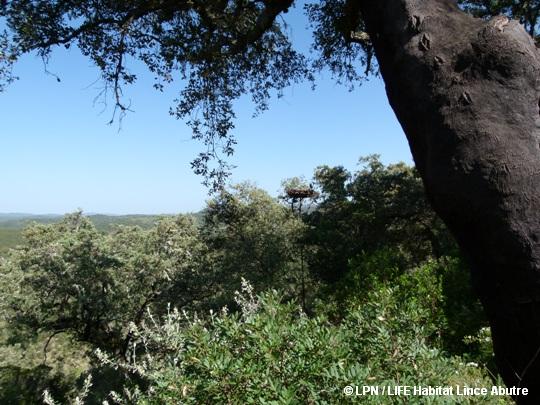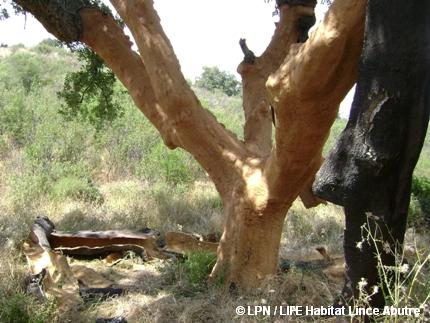How to make cork extraction compatible with Black Vulture conservation
Black Vultures are strongly associated with Mediterranean habitats, namely cork and Holm oak woodlands. Since cork is an important Portuguese export, it is very important that the exploitation of this valuable natural resource is compatible with Black Vulture conservation.
Cork extraction and other forestry activities can be a source of disturbance around the nests, which may lead to their abandonment and consequent breeding failure. Therefore, it is recommended that these activities should be avoided within 500 m of Black Vulture nests, during the breeding season. However, this demand may lead to important economic losses to the land owners, with damage both to the land owner and to the local public opinion regarding the conservation of Black Vultures.
Spanish researchers have recently developed a study on this topic, in Umbría de Alcudia, near Ciudad Real. They analysed the impact of cork extraction on Black Vulture breeding success, and explored ways to minimize this impact. This study showed that the disturbance caused by cork extraction leads to a 20% drop in breeding success, but it also proved that this impact was not due to the presence of men and machinery per se, but rather to the noise level they produced. The study thus concluded that in areas where limiting cork extraction 500 m around vulture nests is economically impracticable, this activity can still be compatible with vulture conservation as long as the noise level is kept to a minimum.
This study was performed by Antoni Margalida and co-authors and was published on the British journal Animal Conservation, being available online on the following address:
http://www.priorimancha.es/documentos/Margalida_et_al_In_press_Anim_Conserv.pdf
 |
 |
Artificial nest for Black Vulture
(in the center of the photo) |
Extraction of cork in the estate where
the nest on the left photo is installed |